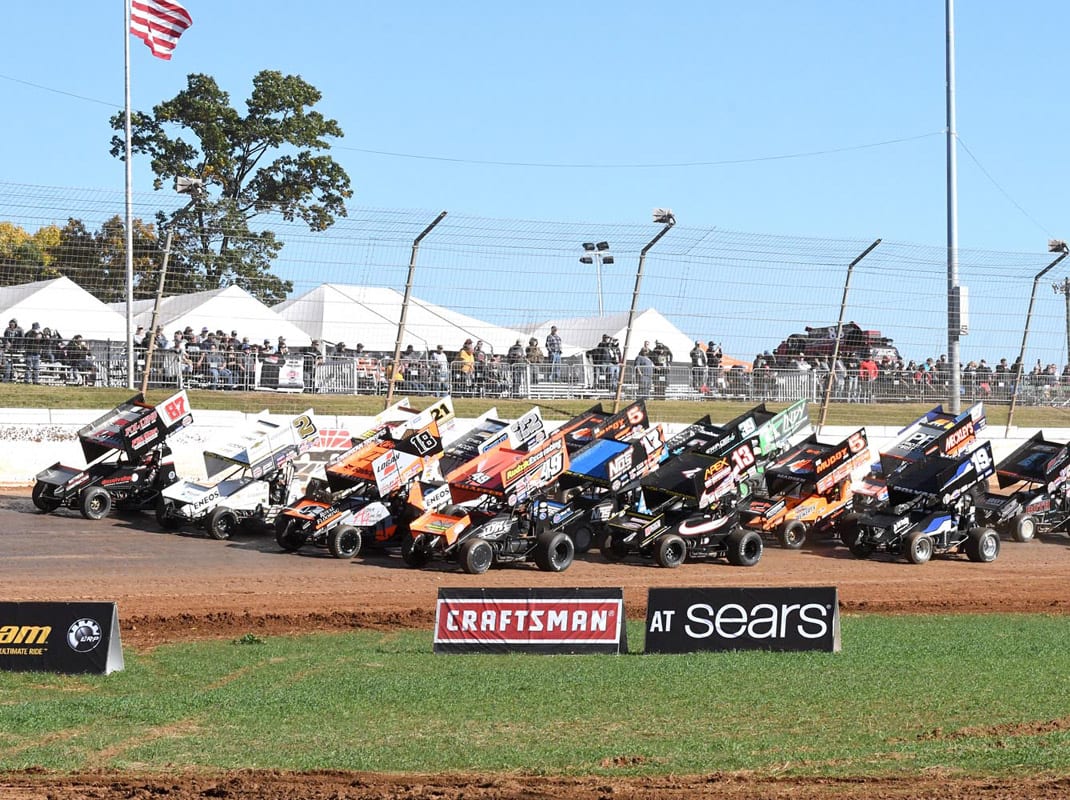It hasn’t taken long for the Can-Am World Finals to morph into one of short-track racing’s premier events.
The Dirt Track at Charlotte, which is a four-tenths-mile, semi-banked dirt oval in Concord, N.C., hosts the spectacle each fall. The event, which runs Nov. 7-9 this year, features the season finales for the World of Outlaws NOS Energy Drink Sprint Car Series, the World of Outlaws Morton Buildings Late Model Series and the Super DIRTcar Series big-block modifieds.
The seating capacity of the main grandstand along the frontstretch is approximately 14,000. However, the number of people on-site each year is usually several thousand more, with nearly every state represented.
It has turned into one of the easiest tickets to sell and hardest to buy — the Saturday finale has sold out grandstand seating each of the last eight years — thanks in part to a group of unsung heroes in charge of track maintenance.
“What makes the World Finals unique is also what makes the track prep unique,” said Tom Deery, president and COO of World Racing Group. “It’s three different types of cars. the good news is Rob (Platfoot) and Larry (Fink), both with their efforts at Eldora and Volusia, are pretty well schooled in dealing with that. They know their way around and what to do and how to manage.”
The event is hosted by both the track and World Racing Group, and a combined crew from both groups as well as other motorsports entities is assembled to provide the best racing surface for three very different divisions of race cars.
From the World Racing Group side, track maintenance expert Larry Fink is joined by Rob Platfoot, who heads the track crew at Ohio’s famed Eldora Speedway. The Dirt Track at Charlotte also has representatives as part of the process in determining the best steps to take in an effort to produce elite racing.
“It’s more collaborative than one person,” Deery noted. “We all work together on what we need to do. That’s such a big event it has to be collaborative.”
In addition to his regular duties at Eldora Speedway, Platfoot helps World Racing Group during the DIRTcar Nationals in Florida each February, the World Finals and the DRIVEN Racing Oil World Short Track Championship — run the weekend prior to the World Finals at The Dirt Track at Charlotte.
“It’s got its challenges, but that’s pretty much any track you go to,” Platfoot said. “You have to get used to that dirt to get familiarized. You have to get it tightened up and moisture in it so you don’t have to do a lot of track prep once the night gets started. That’s a fine line, too, because you can get it too wet and be in trouble, or not wet enough and be in trouble. It’s a very fine line with this line of work to be a hero or a zero.”
Platfoot estimates he spends 85 to 90 hours per week during each of the two weeks at The Dirt Track at Charlotte.
“Start off in the morning with some water down,” he said. “You get it tightened up and grade it to get it smoothed over. Then you keep watering and tilling it, fluffing it up to make sure you get enough moisture inside the track. It’s a constant all day of putting water on.”
The amount of water a track takes varies based on several factors, including the water table and the type of dirt.
“The biggest part is your water table,” Platfoot said. “Volusia has that gumbo dirt. It’s a very unique dirt. It doesn’t take as much water. That has to do with your water table. At Eldora for the Kings Royal, I was putting roughly 55,000 gallons of water on and I started about a week before the race got there. I was doing that all the way through to the end. Eldora takes a lot more water than what Charlotte does and it’s way more than Volusia. That dirt doesn’t take as much water as Eldora does. It holds better.
“It could be 80 degrees one day and you’ll put 30,000 gallons on,” he continued. “The next day it’s cool and cloudy and you’ll only put 8,000 gallons on. It’s really hard to predict what weather you’re going to get, so the water is hard to guess how much you’re going to put on. It depends on how much sun you’ve got. Weather is such a big factor of what you do and how you do it.”
Click below to continue reading.
